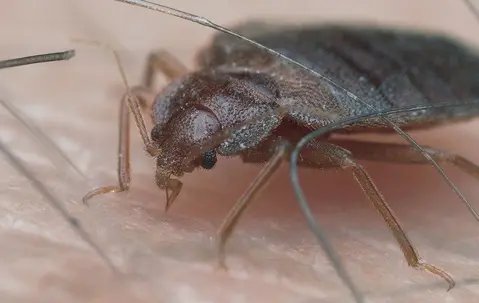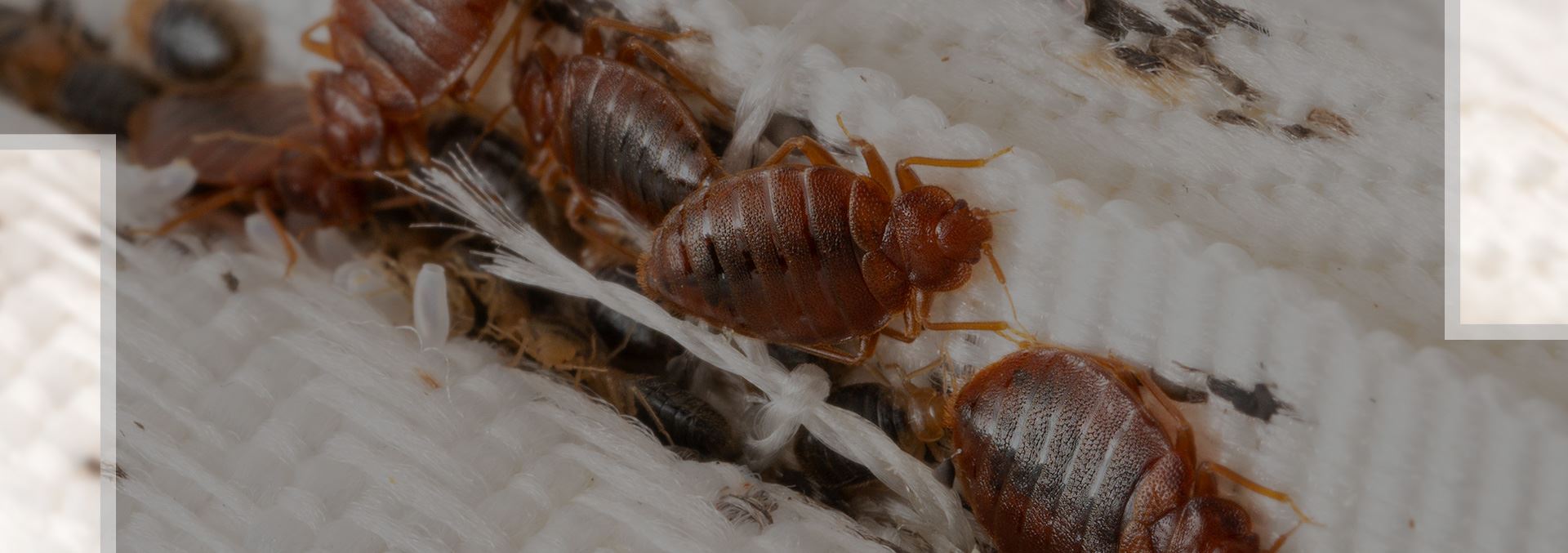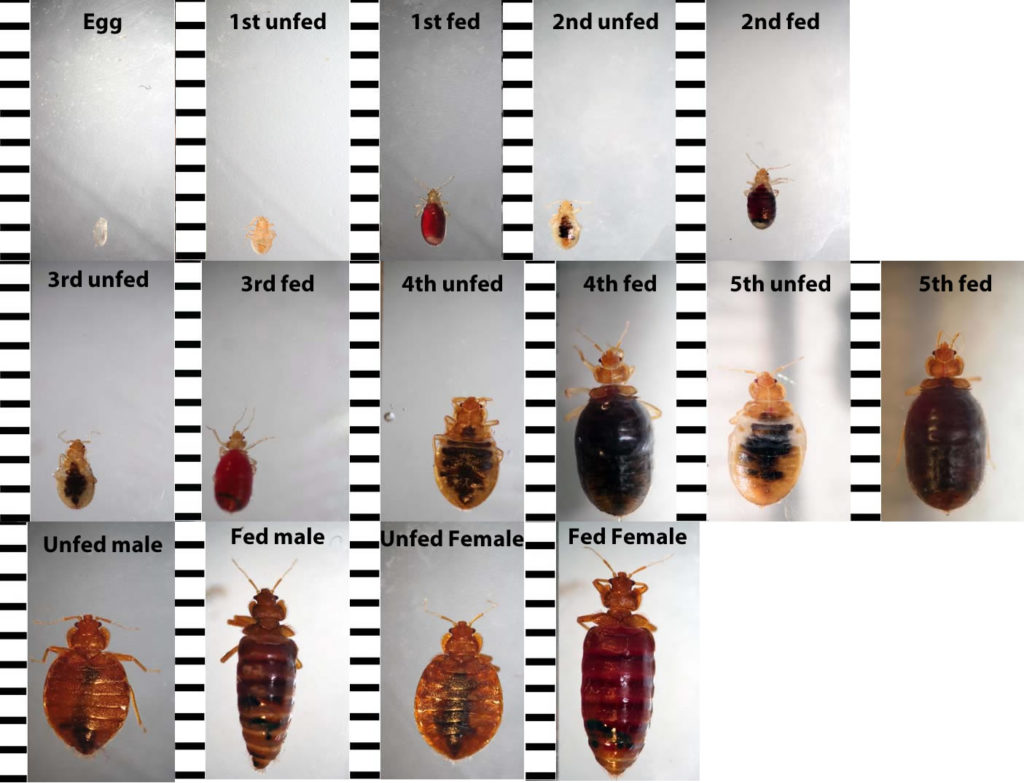Florida’s warm climate, plentiful sunlight, and year-round outdoor appeal make the state a magnet for both residents and tourists. Unfortunately, these same desirable conditions also nurture a range of persistent pests, including bed bugs. In communities like Kissimmee, where tourism thrives and people frequently move in and out of short-term rentals or vacation homes, bed bugs can easily spread from one property to another. Even a single overlooked instance of bed bugs can escalate into a full-blown infestation, creating restless nights, itchy bites, and worries over potential health impacts.
This service page outlines why bed bugs proliferate so successfully in Florida’s environment, how to spot an infestation before it spirals, and why consulting a professional bed bug exterminator is the most direct way to reclaim your living space. Whether you own a home in Kissimmee, manage a bed-and-breakfast in St. Cloud, or oversee rental properties in Windermere or Winter Garden, understanding how bed bugs operate and how to respond effectively can spare you from mounting frustration and disruption.
Why Bed Bugs Flourish in Florida

Warm Year-Round Climate
Unlike colder states that endure prolonged freezing temperatures, Florida’s subtropical conditions seldom drop low enough to force bed bugs into dormancy. Instead, these insects stay active and reproduce throughout the calendar year, feeding on human blood to sustain their life cycles. In Kissimmee and surrounding areas, heated or air-conditioned interiors also stabilize the temperature range (roughly 65–85°F) that bed bugs favor, removing any real seasonal obstacle to their survival.
High Volume of Travel
Kissimmee is known for its proximity to some of Florida’s most popular attractions, welcoming countless visitors each year. Vacation rentals, hotels, and holiday homes handle a revolving door of guests who may unknowingly bring bed bugs in their luggage. At the same time, travelers departing from Kissimmee can carry these pests onward if an infestation goes undetected. Bed bugs easily hide in clothing seams, suitcase linings, or folded blankets, making high-turnover lodging particularly vulnerable to outbreaks.
Dense Urban and Suburban Settings
While bed bugs can thrive in rural areas, they’re especially common in urban or suburban regions where dwellings sit close together. Multi-family buildings, apartments, and tightly knit neighborhoods in places like St. Cloud, Windermere, or Winter Garden create an environment where bed bugs can move from one unit or home to another with relative ease. Electrical conduits, shared laundry rooms, hallways, and adjoining walls can offer bed bugs discrete pathways for expansion.
Constant Indoor Food Source
Bed bugs require blood meals to develop and reproduce, and human residences offer them regular access to sleeping occupants. These pests hide during the day in mattress seams, bed frames, furniture cracks, or behind baseboards, emerging at night to feed on unsuspecting hosts. Because many Florida homes keep windows closed and air conditioning running, bed bugs experience a consistent indoor temperature, allowing them to feed and breed continuously without climate-related slowdowns.
Telltale Signs of Bed Bugs
Red, Itchy Bites
A primary sign is waking up with small, red welts on skin—often clustered on arms, legs, or other exposed areas. While bite reactions vary from person to person, many individuals notice pronounced itching or small rash-like bumps that can appear in lines or groupings. If you or your family consistently awaken with unexplained bites and cannot find culprits like mosquitoes or fleas, bed bugs might be active.
Tiny Black or Rust-Colored Stains
Because bed bugs feed on blood, small specks of dried blood or dark droppings can appear on sheets, pillowcases, or even clothing. When inadvertently crushed, bed bugs may leave rusty smears on bedding. Checking mattress seams or flipping cushions can reveal additional dark stains where bed bugs rest during daylight hours.
Live Bed Bug Sightings
An adult bed bug is roughly 5–7 millimeters long, oval-shaped, and light brown until it feeds. After a blood meal, it becomes darker and more reddish in hue. Nymphs, or immature bed bugs, are smaller and paler, making them tougher to spot. If you lift your mattress to find small, flat insects scrambling for cover, there’s a high chance your home hosts an infestation.
Egg Shells or Shed Skins
Female bed bugs deposit whitish, grain-sized eggs in tight crevices, such as the seams of a bed frame, cracks in wood, or even behind pictures on walls. As bed bugs mature, they shed their exoskeletons multiple times, leaving behind translucent skins. Discovering these tiny eggs or shells—particularly in bedroom areas—is a strong indicator of an active breeding cycle.
Musty Odor
A larger, long-standing infestation can produce a faint, musty or sweet odor, caused by the pheromones bed bugs release. Nonetheless, odor alone can be unreliable as a diagnostic tool, so it’s best to rely on tangible evidence such as droppings, egg shells, or confirmed bites.
Risks of Ignoring Bed Bugs
Rapid Population Expansion
Bed bugs can reproduce with surprising speed in Florida’s climate. A single female bed bug lays multiple eggs daily, which hatch in about two weeks under favorable conditions. Within a month, those nymphs can also breed. Failing to act early allows a small population to mushroom into a major infestation, complicating the extermination process significantly.
Emotional and Physical Stress
Sharing a home with bed bugs is distressing. Constant worry over nighttime bites, frequent laundering of linens, and the stigma associated with an infestation can lead to poor sleep and ongoing anxiety. Some people develop anxiety about even entering their bedrooms, while others experience persistent itching or heightened sensitivity that lingers beyond the actual bites.
Potential Spread to Neighboring Areas
In multi-unit buildings or closely spaced homes, bed bugs can migrate through utility lines, shared walls, or occupant belongings. That means a single untreated infestation in an apartment or townhouse can spread to adjacent units, leading to disputes among neighbors or tenants. Prompt action prevents a community-wide outbreak that might require more extensive—and expensive—measures.
Risk to Personal Belongings and Reputation
While bed bugs don’t typically destroy furniture the way termites damage wood, their presence can prompt the disposal of mattresses, couches, or rugs out of concern for further spreading. Replacing household items can become quite costly over time. If you rent rooms or manage vacation properties in Kissimmee or St. Cloud, customer reviews mentioning bed bugs may also harm your reputation, potentially deterring future guests.

Our Approach: How a Bed Bug Exterminator Tackles Infestations
Thorough Inspection
A professional bed bug exterminator will commence by meticulously examining sleeping areas, sofas, cushions, and potential hiding spots in your Kissimmee property. This inspection focuses on uncovering adult bed bugs, nymphs, eggs, or leftover droppings. Identifying primary infestation zones—like a specific bedroom or living area—guides the subsequent treatment plan and ensures thorough coverage.
Targeted Vacuuming and Steam
Exterminators typically begin by vacuuming surfaces, corners, and seams to remove visible bed bugs and their eggs. They may also use steam treatments, applying high heat that penetrates fabrics and furniture folds to kill bed bugs on contact. Steam is an effective chemical-free approach that reaches areas where sprays might not fully penetrate, such as mattress seams or deep crevices in upholstered chairs.
Insecticide Applications
Professionals often apply insecticides to cracks and crevices around bed frames, baseboards, and other hideouts. These treatments include contact sprays or residual insecticides that continue to kill bed bugs for a period after application. Some technicians may use insect growth regulators, which disrupt bed bug development to limit reproduction cycles.
Heat Treatments
For more extensive or deeply embedded infestations—sometimes found in multi-room homes or short-term rental properties—heat treatments can be highly effective. These treatments raise the interior temperature above 120°F, lethal to bed bugs in all life stages. While heat treatments require occupants to vacate temporarily, they can eradicate even large-scale infestations without relying on traditional chemicals.
Ongoing Monitoring
Bed bug eggs may still hatch weeks after initial interventions, so scheduling follow-up checks is crucial. Professionals might place bed bug interceptors under bed posts or use other monitoring devices to track any surviving or newly hatched insects. Additional spot treatments or alternative methods can then be implemented swiftly if signs of bed bugs persist.
Typical Methods for Bed Bug Treatments
- Inspection and Mapping
- Technicians systematically search each room, pulling back linens and inspecting seams, frames, and cracks.
- They determine whether bed bugs are limited to one area or have spread throughout the property.
- Technicians systematically search each room, pulling back linens and inspecting seams, frames, and cracks.
- Vacuuming
- Before applying chemicals, exterminators use powerful vacuums with special attachments to capture live bed bugs and eggs.
- Vacuuming reduces pest numbers immediately and removes debris that might interfere with subsequent treatments.
- Before applying chemicals, exterminators use powerful vacuums with special attachments to capture live bed bugs and eggs.
- Steam Treatments
- Steamers deliver high temperatures directly into areas where bed bugs hide, such as tufted mattresses or upholstered furniture folds.
- This chemical-free approach kills insects and eggs without leaving toxic residues.
- Steamers deliver high temperatures directly into areas where bed bugs hide, such as tufted mattresses or upholstered furniture folds.
- Chemical Sprays and Dusts
- Residual insecticides applied along baseboards, seams, and mattress edges continue to affect bed bugs that walk over treated surfaces.
- Dust formulations may be used in wall voids or tight gaps where bed bugs nest, remaining effective for extended periods.
- Residual insecticides applied along baseboards, seams, and mattress edges continue to affect bed bugs that walk over treated surfaces.
- Heat Treatments
- Technicians bring specialized heaters to elevate indoor temperatures to a level fatal to bed bugs.
- This thorough method reaches deep into furniture, walls, and belongings, typically requiring occupants to vacate for several hours.
- Technicians bring specialized heaters to elevate indoor temperatures to a level fatal to bed bugs.
- Encasements and Monitors
- Placing mattress and box spring encasements traps any remaining bed bugs inside, preventing new bites and controlling populations over time.
- Placing mattress and box spring encasements traps any remaining bed bugs inside, preventing new bites and controlling populations over time.
Interceptor devices under bed posts capture climbing bed bugs, indicating whether further action is needed.

Service Areas: Kissimmee, St. Cloud, Windermere, Winter Garden
Though bed bugs can target nearly any region, this service page specifically addresses properties in and around Kissimmee—a bustling city adjacent to some of Florida’s top attractions. With endless visitor turnover, bed bugs can infiltrate hotels, short-term rentals, and family homes alike. We also extend these bed bug control solutions to neighboring communities:
- St. Cloud: Located just east of Kissimmee, St. Cloud blends historic charm with steady growth in new developments. Bed bugs often travel on furniture or hitch rides on clothes when families move between homes, making regular checks vital in these expanding neighborhoods.
- Windermere: Known for upscale living near scenic lakes, Windermere can still face bed bug issues due to frequent visitors, secondhand furniture exchanges, or the arrival of newly purchased items. Prompt, thorough treatments and homeowner vigilance are keys to preventing widespread infestations.
- Winter Garden: A family-friendly community with a mix of older and newer residences. Multi-bedroom homes and frequent gatherings can create ideal conditions for bed bugs to spread if they gain a foothold. Keeping a watchful eye on children’s rooms, guest quarters, and shared living spaces helps maintain a bug-free environment.
Wherever you live in or around these areas, the same principles of early detection, professional intervention, and consistent follow-up apply. Bed bugs do not discriminate based on zip code—they only need a warm place to hide and a sleeping host to feed upon.
Why Choose Us
Florida-Focused Expertise
In a state known for mild winters and an ongoing influx of visitors, bed bug management must address these perpetual risk factors. Our strategies combine proven tools—like vacuuming, steam, and modern insecticides—with an understanding of Florida’s climate, ensuring your property remains free of bed bugs well after initial treatments.
Thorough Inspections
By conducting in-depth evaluations of bedrooms, seating areas, and known hiding spots, we reveal not just adult bed bugs but also newly laid eggs and nymphs. This meticulousness improves the odds of eliminating every stage of a bed bug’s life cycle, decreasing the chance of resurgence.
Emphasis on Prevention
Long-term success relies on occupant diligence once active infestations are resolved. We provide guidance on proactive steps—like washing and heat-drying bedding regularly, sealing cracks near baseboards, and using mattress encasements. Together, these measures help reduce the risk of reintroduction or unnoticed spread.
Adaptable Treatment Options
From small-scale operations—like single-bedroom apartments—to expansive homes or multi-unit dwellings, we design a plan that suits the specific layout and severity of the infestation. We avoid one-size-fits-all approaches, acknowledging that different properties may benefit from specialized methods, such as steam or heat treatments.
Discreet, Professional Service
We understand the sensitivity around bed bug infestations. Our teams maintain a courteous, respectful approach, aiming to resolve pest issues with minimal disruption or embarrassment. We handle each property as though it were our own, ensuring thoroughness and attention to detail.
Call to Action
Are you noticing unexplained bites when you wake up, encountering small black specks on your bedding, or suspecting bed bugs in your furniture? Contact us to learn more or schedule your service. We specialize in bed bug exterminator strategies throughout Kissimmee, as well as in St. Cloud, Windermere, and Winter Garden. Quick, targeted intervention helps you reclaim a restful night’s sleep and maintain a pest-free living or work environment.
Maintaining a Bed Bug–Free Environment
Even after a successful professional treatment, ongoing vigilance can prevent bed bugs from regaining a foothold. Here are practical steps to keep infestations at bay:
- Monitor Secondhand Items
- Thoroughly inspect used furniture, clothing, or mattresses before bringing them into your home. Look for signs of dark specks, shed skins, or tiny eggs.
- Vacuum or steam-treat these items if uncertain about their history.
- Thoroughly inspect used furniture, clothing, or mattresses before bringing them into your home. Look for signs of dark specks, shed skins, or tiny eggs.
- Frequent Vacuuming
- Vacuum rugs, carpets, and upholstered furniture weekly.
- Pay special attention to crevices, sofa seams, and underneath cushions, emptying your vacuum canister or bag into a sealed plastic bag for disposal.
- Vacuum rugs, carpets, and upholstered furniture weekly.
- Elevate Luggage
- When traveling, keep suitcases on metal luggage racks or elevated surfaces rather than placing them on beds or floors.
- Once home, vacuum or steam-clean luggage, washing any clothes on hot cycles.
- When traveling, keep suitcases on metal luggage racks or elevated surfaces rather than placing them on beds or floors.
- Protect Your Bed
- Encase your mattress and box springs in bed bug–proof covers. This containment prevents stray bugs from hiding within these items.
- Regularly check encasements for rips or tears that might allow bugs access.
- Encase your mattress and box springs in bed bug–proof covers. This containment prevents stray bugs from hiding within these items.
- Declutter
- Removing clutter reduces potential hiding spots for bed bugs. Store belongings in sealed plastic bins rather than cardboard boxes.
- The fewer objects lying around bedrooms and living areas, the harder it is for bed bugs to stay undetected.
- Removing clutter reduces potential hiding spots for bed bugs. Store belongings in sealed plastic bins rather than cardboard boxes.
- Wash Linens in Hot Water
- Launder sheets, pillowcases, and blankets weekly at the highest recommended temperature.
- High-heat drying kills any bed bugs or eggs that might cling to fabrics.
- Launder sheets, pillowcases, and blankets weekly at the highest recommended temperature.
- Encourage Open Communication
- In multi-family dwellings or short-term rentals, communicate any suspected signs of bed bugs quickly.
- Early awareness helps neighbors or property managers coordinate inspections and prevent widespread issues.
- In multi-family dwellings or short-term rentals, communicate any suspected signs of bed bugs quickly.
By combining these preventive steps with professional expertise, homeowners and businesses throughout Kissimmee, St. Cloud, Windermere, and Winter Garden can greatly reduce the risk of bed bug infestations. A proactive stance, supported by routine checks, thorough cleaning, and immediate attention to possible warning signs, keeps bed bugs from turning a minor concern into a major, disruptive ordeal. Florida’s climate may enable these pests to thrive year-round, but with the right knowledge and an effective exterminator on your side, you can preserve a peaceful, bite-free environment for everyone in your household or business.
